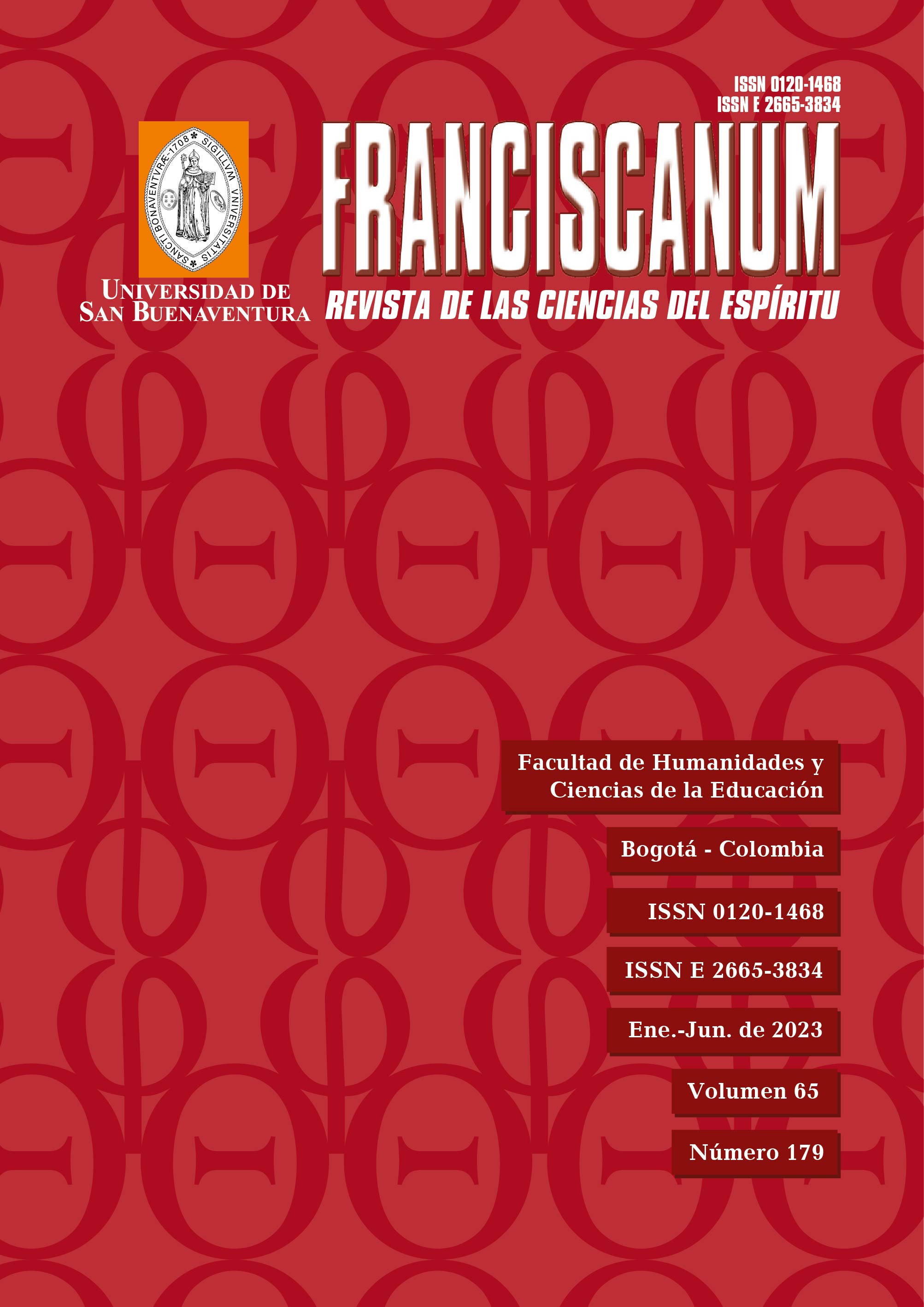This journal provides immediate open access to its content, based on the principle that giving the public free access to research helps a greater global exchange of knowledge.
Therefore, the Creative Commons 4.0 Attribution Attribution - Equal Share (by-sa) License is accepted: The commercial use of the work and the possible derived works is permitted, the distribution of which must be done with a license equal to that regulates the original work.
http://creativecommons.org/licenses/by-sa/4.0/
Along these same lines and in line with the Open Access policy, it is clarified that the authors maintain their rights to articles, without restrictions and, in the same way, they maintain their publication rights, without restrictions. They are only asked to reference the number of the Franciscanum magazine where the article initially appeared.
Abstract
The article presented here is part of a systematic elaboration of iconographic styles and their respective iconological messages of Christian visual culture, with a focus on devotional religious art. The work in question is an interesting Flemish example of Catholic visual language in use a hundred years after the Protestant Reformation and created, probably, between the Twelve Years' Truce and the beginning of the Thirty Years' War[s]. The engraving Homo moriens by Hu-erronymus Wierix from the year [1609/1619] is studied. Formally, it is a classic emblem composed of an Inscriptio, Pictura and Subscriptio. The work is read through the iconological method of Erwin Panofsky. It can be concluded that if the tone of the visual narrative is not polemical or controversial, but pastoral and especially sensitive to the religious need of people who are on their deathbed. It is an “internal” visual discourse of the church, which lives up to the soteriological emphases established by the Council of Trento in a perspective of care, building certainties, in order to face the inevitable agony.
References
Renders, Helmut, e Vinícius Magno Nunes Borges Couto. «O ‘Carro Triunfal arminia-no’». Revista Brasileira De História Das Religiões 14 (41) (2021): 169-203. https://doi.org/10.4025/rbhranpuh.v14i41.55102.
Martins, Fausto. «Leitura iconográfica e mensagem icônica dos `novíssmos´ de Wierix». Rev. Fac. Letras – Línguas e Literaturas, Porto, PT, Anexo VIII [“Últimos Fins” na Cultura Ibérica (XV-XVIII)], (1997): 51-70.
Mauquoy-Henrickx, Marie. Les estampes des Wierix ou cabinet des Estampes de la Bibliothéque Royale Albert Ier. Bruxelles: Bibliothèque Royale Albert ler, 1978-1983.
Panofsky, Erwin. Significado nas artes visuais, 3a edição. São Paulo: Editora Perspectivas,1991.
Renders, Helmut. «Razão e afeto nos Pia Desideria: inspiração para uma linguagem interconfes-sional contemporânea». Pistis & Praxis, Curitiba, v. 12, n. 3, (2020):754-773. DOI: 10.7213/2175-1838.12.003.DS12
Sors, Anne-Katrin. Allegorische Andachtsbücher in Antwerpen. Göttingen: Uiversitätsverlag Göttingen, 2015.
Verheegen, Evelyne. «Religieuze kunst als verzet en troost in de Tachtigjarige Oorlog Een portret van de Utrechtse patriciërsfamilie Van Haeften». Volkskunde, v. 2, (2021): 261-331.
Referências iconográficas
Hübner, Julius. Glaube, Liebe, Hoffnung, 1860. Disponível na página Julius Hübner. Disponível em: http://www.julius-huebner.de/DE/1858_glaube_liebe_hoffnung.html
Bruegel, Pieter. As sete obras de misericórdia. In: Wikepedia. Aceso em: 28 abr. 2022. Disponível em: https://upload.wikimedia.org/wikipedia/commons/9/91/Pieter_Bruegel_the_Elder_-_Caritas_%28Charity%29_-_Google_Art_Project.jpg.
Cock, Hieronymus. «A fé, o amor e a esperança assistem o ser humano». In: Acervo do Museu Britânico, número de acervo 1949,0709.216. Acesso em 28 abr. 2022. Disponível em: https://www.britishmuseum.org/collection/image/130627001
Cramer, Daniel. Emblema sacra. In: Open Libary. Acesso em: 1 maio 2022. Disponível em: https://openlibrary.org/books/OL23704732M/Emblemata_sacra.
Aldorfer, Albrecht. “Venus com dois puti [1530]. In: Página Wikipedia Commons. Acesso em: 30 abr. 2022. Disponível em: https://commons.wikimedia.org/wiki/File:Venus_with_Two_Putti_MET_ DP833062.jpg.
Selaer, Vincent. “Charitas como alegoria”, 1538/1543. In: Página Wikipédia. Acesso em: 30 abr. 2022. Disponível em: https://fr.wikipedia.org/wiki/Fichier:%27Allegory_of_Charity%27_by_Vincent_Sellaer.jpg .
Wierix, Hieronymus. Homo moriens. In: Banca de dados digitais do Virtuelles Kupferstich-kabinett da Biblioteca Herzog August, Wolfenbüttel, Alemanha. Acesso em: 30 abr. 2022. Disponível em: http://kk.haum-bs.de/?id=wierix-h-ab3-0027.
Wierix, Hieronymus. Homo moriens. In: Página do Rijkmuseum, Amsterdã, Países Baixos. Acesso em: 28 abr. 2022. Disponível em: http://hdl.handle.net/10934/RM0001.COLLECT.332421.



















